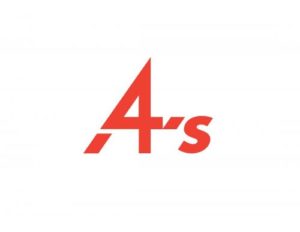 “The Curse of Oak Island,” History Channel’s long running TV show chronicles the Lagina brothers search for buried treasure on a remote island off the coast of Nova Scotia. After eleven seasons, the brothers and their team have yet to find a horde of gold, the holy grail, or the ark of the covenant all which legend suggests were buried on the island.
“The Curse of Oak Island,” History Channel’s long running TV show chronicles the Lagina brothers search for buried treasure on a remote island off the coast of Nova Scotia. After eleven seasons, the brothers and their team have yet to find a horde of gold, the holy grail, or the ark of the covenant all which legend suggests were buried on the island.
In many respects, the plight of the Lagina brothers can be likened to advertisers and their search for advertising “gold” through the use of programmatic buying. With the promise of greater efficiencies, better targeting, and improved effectiveness programmatic buying has yet to deliver on those aims. To the contrary, a multi-layered, often opaque supply chain, increased intermediary fees, lack of measurement standardization, and persistent fraud have negatively impacted advertisers’ investments in this area.
Yet 55% of ad spend is going toward digital media with a preponderance of that is being place programmatically. Further, most marketers know little about how those investment decisions are being made on your behalf.
According to the Association of National Advertisers (ANA) recent “Programmatic Media Supply Chain Transparency Study” of the estimated $88 billion in open web programmatic ad spend “around $22 billion is wasteful and unproductive.”
If you are alarmed by that number, you may want to engage your media team and agency personnel in dialog around the questions suggested by the ANA in their report. Below is a sampling of the suggested queries:
- Ask why Made for Advertising (MFA) websites are utilized, as they are largely useless for growth-oriented strategies.
- Ask why they “spray and pray” across 44,000 websites per campaign when less than 5,000 will probably be sufficient.
- Ask whether the agency is acting as principal or agent. If they are acting as principals, are your brands getting the best media deals possible?
- Ask why they have not already embraced log-level data, a principal pathway to more effective decision-making with programmatic media.
- Ask if they are fighting fraud optimally. Or better yet, ask if they know where to look for fraud and how to fight it when they find it.
The stakes are too high for advertisers when it comes to their continued and escalating investment in this complex area. In the words of twentieth-century American scientist, Alan Perlis: “Fools ignore complexity. Pragmatists suffer it. Some can avoid it. Geniuses remove it.”
Now is the time to “turn up the heat” as it relates to advertiser demands of their media supply chain partners and the need for greater accountability around the issues plaguing their programmatic investments.

 According to Statista, global programmatic ad spending will reach $617 billion in 2024, growing over 20% year-over-year.
According to Statista, global programmatic ad spending will reach $617 billion in 2024, growing over 20% year-over-year. “Trust without inquiry is a compass pointing toward deception.”
“Trust without inquiry is a compass pointing toward deception.” In theory the fees that agencies charge their clients are based upon a combination of direct labor costs, an overhead allocation, and a desired level of profit.
In theory the fees that agencies charge their clients are based upon a combination of direct labor costs, an overhead allocation, and a desired level of profit. When it comes to budget management no one likes surprises, least of all marketers.
When it comes to budget management no one likes surprises, least of all marketers. Advertisers should never expect an agency to cover media costs or other third-party expenses. Payment terms should ensure that an advertisers funds are on-hand at the agency to satisfy all third-party vendor payment obligations in a timely manner. Further, there are two aspects to the payment terms discussion:
Advertisers should never expect an agency to cover media costs or other third-party expenses. Payment terms should ensure that an advertisers funds are on-hand at the agency to satisfy all third-party vendor payment obligations in a timely manner. Further, there are two aspects to the payment terms discussion:  The current advertising ecosystem is fraught with risks as the number of intermediaries servicing advertisers and their agencies continues to grow. The recent Chapter 11 bankruptcy filing of demand side platform MediaMath serves as a subtle reminder of these risks. At the time of its bankruptcy filing, MediaMath owed several hundred of its creditors between $100 million and $500 million.
The current advertising ecosystem is fraught with risks as the number of intermediaries servicing advertisers and their agencies continues to grow. The recent Chapter 11 bankruptcy filing of demand side platform MediaMath serves as a subtle reminder of these risks. At the time of its bankruptcy filing, MediaMath owed several hundred of its creditors between $100 million and $500 million. Good article in Digiday on what is a unique challenge for clients as they assess overall marketing budget allocation.
Good article in Digiday on what is a unique challenge for clients as they assess overall marketing budget allocation.  Agency performance management is an essential element in building an effective, highly productive network of marketing partners that includes an advertiser’s media, creative, experiential, shopper marketing and PR firms.
Agency performance management is an essential element in building an effective, highly productive network of marketing partners that includes an advertiser’s media, creative, experiential, shopper marketing and PR firms.